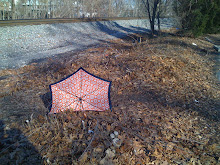On Tuesday of last week I attended a number of sessions and I'll try to paraphrase them for you:
The first session I attended was titled "Getting Serious About Alternate Reality: Designing a Different ARG. ARG refers to Alternate Reality Games, this description comes from the GDC website:
ARGs combine different forms of media and real-world presence to create an experience that actively blurs the border between fiction and reality. With their radically unconventional structure and reality-blurring ambitions, ARGs have generated a great deal of attention from mainstream media, but does the actual experience of playing an ARG live up to the hype?
Well, no. The game discussed was titled Chain Factor designed to support the CBS TV show Numb3rs and was an attempt to integrate the narrative of an episode of the show, an online game, and some clever advertising to create a game that seemed to require way too much time and energy to become involved in- all, ultimately in the service of a television show. If there is one thing going to GDC teaches you is how much energy, mental and otherwise, is expended on creating disposable consumer culture. While Frank Lantz, the game's lead designer, had some interesting ideas about constructing narrative through game play and puzzle solving based on the French Literary movement Oulipo at the end of the day this is still a game for a crime drama on TV.
More interesting was the second session on the impact of Will Wright's Spore on education. Prior to the game's release there had been much speculation that this game would be used in science classes to discuss evolution and even had the creationists up in arms, unfortunately that wasn't the case. While relatively entertaining the game failed to deliver on the science and ended up being criticized by both sides of the evolution debate (yes, there's still a debate). Interestingly the game has been used by English teachers, but mainly it's free creature maker feature that can be found online at the Spore site. This is totally fun and I'll give extra credit to anyone who reads this much, downloads the software, and then posts their creations.
The last session I attended on Tuesday was whether video games could be considered an art form in their own right, a point of debate after Roger Ebert had once written an article claiming they could not be. However, this is a big topic and one that I will address in an upcoming separate post.











